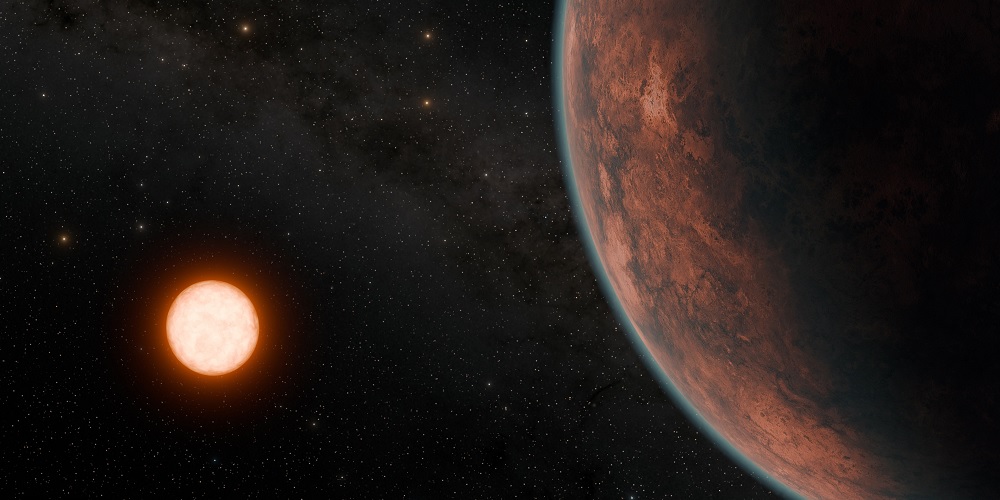User review: 5 / 5
Using observations from NASA’s Transiting Exoplanet Survey Satellite (TESS) and many other instruments, two international teams of astronomers have discovered a planet between the size of Earth and Venus, just 40 light-years away. Several factors make this planet well-suited for further study with NASA’s James Webb Space Telescope.
TESS observes a large part of the sky for about a month, monitoring the brightness changes of tens of thousands of stars every 20 seconds to 30 minutes. One of the mission’s main goals is to capture transits, the short, regular dimming of stars caused by the passage of orbiting worlds.
“We have found the nearest temperate world the size of Earth,” said Masayuki Kuzuhara, an assistant professor at the Astrobiology Center in Tokyo who leads the research team with Akihiko Fukui, an assistant professor at the University of Tokyo. “Although we don’t yet know if it has an atmosphere, we consider it to be an exo-Venus with a size and energy absorption similar to that of our neighboring planet in the Solar System.”
The star, called Gliese 12, is a cool red dwarf nearly 40 light-years away in the constellation Pisces. The star is only about 27% the size of the Sun and about 60% the temperature of the Sun’s surface. The newly discovered world, called Gliese 12 b, orbits its parent planet every 12.8 days and is Earth-sized or slightly smaller, comparable to Venus. Assuming no atmosphere, the planet’s surface temperature is about 42 degrees Celsius.
Astronomers say the small size and mass of red dwarf stars make them ideal for finding Earth-sized planets. A smaller star means more dimming at each transition, and a lower mass means the planet can cause a larger wobble, known as “reflection motion.” These effects make it easier to detect smaller planets. The lower brightness of red dwarf stars also means that their habitable zones, the orbital distances at which liquid water could exist on a planet’s surface, are closer. This makes it easier to detect planets in habitable zones around red dwarfs than planets around stars that emit more energy.
The distance between Gliese 12 and the new planet is only 7% of the distance between Earth and the Sun. The planet receives 1.6 times as much energy from its star as the Earth receives from the Sun, and about 85% of the energy experienced by Venus. “Gliese 12 b is one of the best targets to study whether Earth-sized planets orbiting cool stars can maintain their atmospheres, a crucial step in understanding the habitability of planets in our galaxy,” said Shishir Dholakia, a doctoral candidate at the center. Astrophysics at the University of Southern Queensland, Australia. He led another research group with Larissa Palethorpe, a PhD candidate at the University of Edinburgh and University College London.
Photo: NASA/JPL-Caltech/R. Hurt
Both groups suggest that studying Gliese 12 b could help unlock certain aspects of the evolution of our own solar system. “It is thought that the first atmospheres of Earth and Venus were removed and then replenished by volcanic exhalation and bombardment by solar system debris,” explains Palethorpe. “Earth is habitable, but Venus is not a complete loss of water. Because Gliese 12 b’s temperature is intermediate between Earth and Venus, its atmosphere can teach us a lot about planetary evolutionary paths.
An important factor in maintaining the atmosphere is the star’s storminess. Red dwarfs tend to be magnetically active, causing frequent, powerful X-rays. However, both groups conclude that Gliese 12 shows no signs of extreme behavior. The paper, led by Kuzuhara and Fukui, was published May 23 in The Astrophysical Journal Letters. Dholakia and Palethorpe’s observations were published on the same day in the Monthly Notices of the Royal Astronomical Society.
During transit, the star’s light passes through the atmosphere. Different gas molecules absorb different colors, so the shift produces a series of chemical fingerprints that can be detected by telescopes like Webb. “We know of only a handful of Earth-like temperate planets that are close enough to us and meet the other criteria needed for this type of study, called transmission spectroscopy, that have current conditions,” says Michael McElwain, a research astrophysicist at NASA’s Goddard Space. Airport Center in Greenbelt, Maryland, and co-author of the paper by Kuzuhara and Fukui. “We need more examples like Gliese 12 b to better understand the atmospheric diversity and evolutionary outcomes of these planets.”
TESS is a NASA Astrophysics Explorer mission managed by NASA Goddard and operated by MIT in Cambridge, Massachusetts. Other partners include Northrop Grumman, based in Falls Church, Virginia; NASA’s Ames Research Center in Silicon Valley, California; center of astrophysics | Harvard & Smithsonian in Cambridge, Massachusetts; MIT’s Lincoln Laboratory; and the Space Telescope Science Institute in Baltimore. More than a dozen universities, research institutes and observatories around the world are participating in the operation.
Bro: NASA

